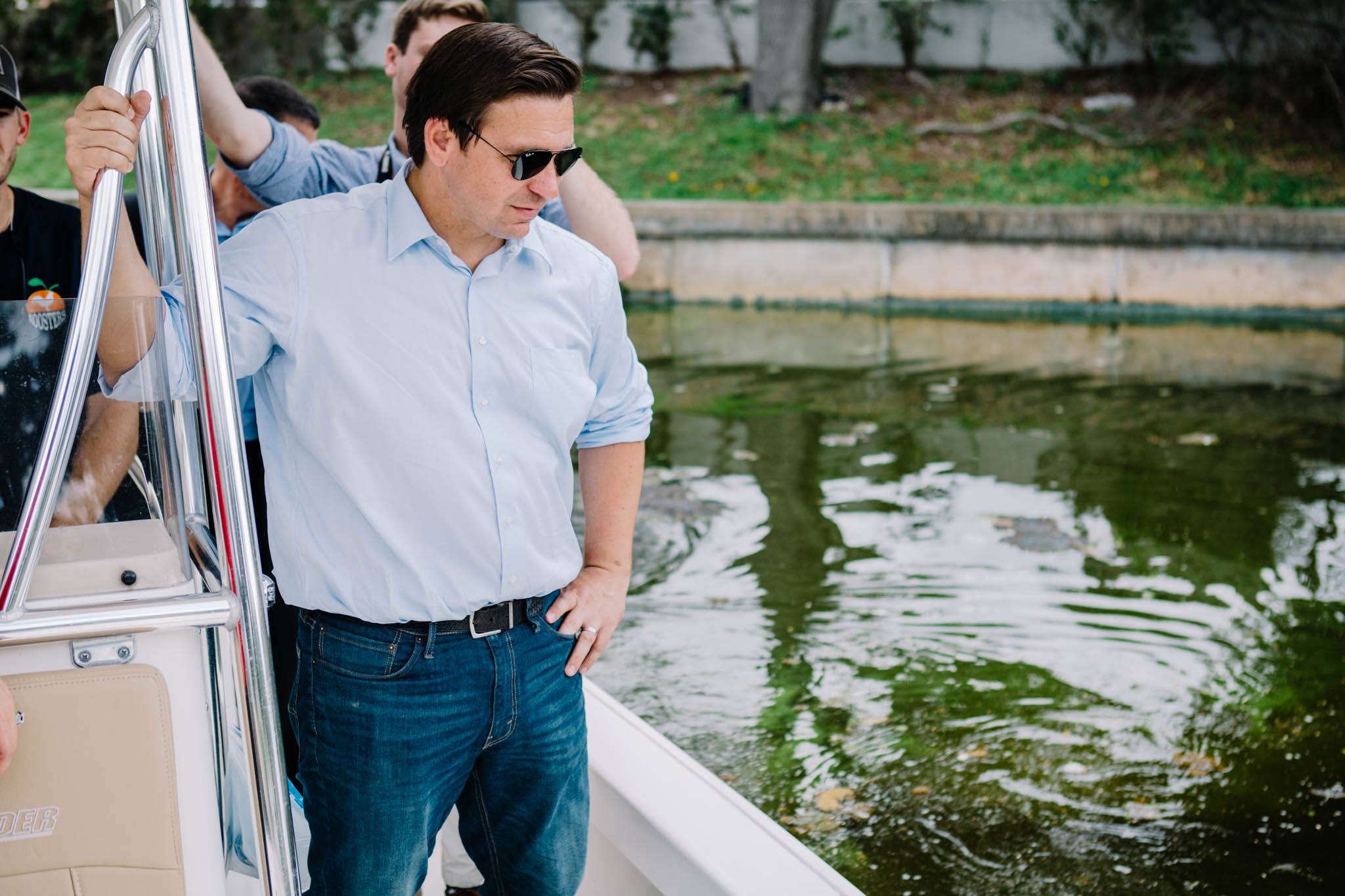
Gov. Ron DeSantis would get nearly all the money he’s requested for environmental projects in an initial House budget proposal for next year.
A $3.97 billion proposal for the Department of Agriculture and Consumer Services, the Department of Environmental Protection and the Fish and Wildlife Conservation Commission includes $607.4 million for Everglades restoration and water-improvement projects such as combating future outbreaks of toxic algae and red tide.
DeSantis asked for $625 million as the first part of an ambitious $2.5 billion in funding over the next four years.
House Agriculture & Natural Resources Appropriations Chairwoman Holly Raschein, a Key Largo Republican, praised work of the state agencies.
“Our agencies have faced significant challenges over the past couple of years responding to hurricanes, harmful algae blooms and red tide, to a great extent using existing trust funds, (which) limits our funding abilities,” Raschein said.
Senate President Bill Galvano, a Bradenton Republican, has said the Governor’s environmental-funding request may be “pushing” the limits of a budget expected to be stretched because of the response to Hurricane Michael.
An initial Senate environmental-budget proposal will be released Wednesday, said Sen. Debbie Mayfield, a Rockledge Republican who chairs the Agriculture & Natural Resources Appropriations Subcommittee.
The full House and Senate in the coming weeks will approve overall budgets and then enter negotiations on a final spending plan for the 2019-2020 fiscal year, which starts July 1.
The House proposal includes $327.4 million for Everglades restoration, $50 million for targeted grants for wastewater and stormwater improvements, $50 million for the state’s natural springs and $40 million in the state Department of Transportation work plan to complete raising a section of the Tamiami Trail. That project is intended to improve southern flow of water through the Everglades.
The springs funding would remain unchanged from the current year.
The proposal floats $10.8 million to increase water-quality monitoring and the establishment of a Blue Green Algae Task Force within the Department of Environmental Protection and $4.2 million for the creation of the Center for Red Tide Research within the Fish and Wildlife Conservation Commission.
Outside the Governor’s request, the House proposal would provide $307 million for hazardous waste cleanup, $48 million for state park repairs, $50 million for beach repairs, $38.6 million for debris removal from Hurricane Irma and $20 million for the Florida Forever land preservation program.
A bill (SB 944) that has started moving in the Senate would provide $100 million for the Florida Forever program.
The House is also offering $58.1 million for citrus-canker payments to residents in Lee and Orange counties.
Legislators agreed to pay the money to compensate residents who lost orange, grapefruit and other citrus trees as part of a Florida Department of Agriculture program to stop the spread of deadly citrus-canker disease. Attorneys for the homeowners raised property-rights arguments in challenging the department’s actions, and a judgment was entered in 2008.
Another $14.6 million in the House proposal would go toward citrus greening research.
Before Raschein released the spending plan, her subcommittee introduced a proposal (PCB ANR 19-01) that would send 19 Fish and Wildlife Conservation Commission law-enforcement officers to the Department of Environmental Protection, a change sought by DeSantis.
The number of officers represents a fraction of the more than 800 sworn officers in the Fish and Wildlife Conservation Commission.
Asked by Rep. Rick Roth, a Loxahatchee Republican, about what has “broken” to justify the move, Raschein pointed to a Jan. 10 executive order in which DeSantis outlined his environmental proposals. The executive order included a shift of environmental crimes law enforcement.
“This is an area where FWC has agreed that they would be willing to relinquish. FDEP is happy to take this on,” Raschein said.
—
Republished with permission from The News Service of Florida.




One comment
Bill gibson
March 21, 2019 at 12:20 am
What giving us our public beaches back ?
Comments are closed.